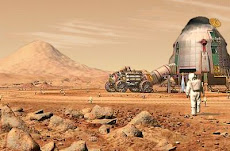In June, India’s prime minister Narendra Modi claimed that, at a cost of just $74 million, the Mars Orbiter Mission was less expensive than production of the Oscar-winning science fiction film “Gravity,” which cost a reported $100 million to make. For comparison, NASA’s most recent Mars probe, Maven, which made orbit on Sunday, ran up a cost of about $671 million and the European Space Agency’s 2003 mission's price tag was roughly $386 million.
India’s space agency has honed its ability to make do with limited resources over the years out of “sheer necessity,” according to the Wall Street Journal. In addition to operating on a comparatively paltry budget, many international agencies refused to share expertise with ISRO’s scientists after the country began conducting nuclear weapons tests.
While some critics question whether a nation that is home to a third of the world’s poorest people should be spending roughly a billion dollars per year on space exploration, India counters that the program drives innovation and fuels employment in the country. Modi hopes the mission will help establish India as the world leader in cheap space exploration.
The spacecraft called “Mangalyaan,” or “Mars-craft” in Hindi, which was launched last November, slowed down just enough to reach orbit early Wednesday, securing India a place in the elite global space club of Martian explorers.
Images of beaming scientists clapping and hugging each other at the command center in the southern city of Bangalore were shown live in a nationally televised broadcast after a breathless, nail-biting countdown during the spacecraft’s final leg.
Over an hour after reaching the orbit, the space agency received the first photographic data of the red planet’s terrain which were transmitted via an antenna located in Canberra, Australia.
Calling it the “national pride event,” the Indian Space Research Organization also showed it live on Facebook and Twitter.
Officials at the space agency said that for the past two months, scientists worked more than 12 hours a day brainstorming every possible problem and coming up with exhaustive recovery options.
MOM has built-in intelligence, autonomy and a stand-by control system to prevent a breakdown in communication, said M. Pitchaimani, deputy director of the control center at the Indian Space Research Organization.
“Many countries have failed in their first attempt. India got success the first time itself,” said Pitchaimani in a telephone interview. “But this has come after intense study of others’ failures and the reasons for failure, and building our satellite accordingly. We also had gained from their accumulated knowledge about the gravity field of the planet and we built robust instruments based on that data.”
More than half of the 51 Mars missions launched globally have failed. India’s successful mission follows those of the United States, Europe and Russia. But India’s mission cost a fraction of NASA’s $670 million Maven, which entered Mars orbit Sunday. The Curiosity Rover, which touched down on Mars in 2012, cost nearly $2 billion.
By comparison, India’s $72 million Mars orbiter is the cheapest interplanetary mission ever. Modi said that India’s Mars mission cost less than what it took to make the famous Hollywood space movie “Gravity.”
“We kept it low cost, high technology. That is the Indian way of working,” Sandip Bhattacharya, assistant director of B.M. Birla Planetarium in the northern city of Jaipur, said in a telephone interview. “ . . . Our goal was to reach Mars and send few pictures and scientific data. Now in the coming years, this will give us leverage to plan for newer Mars missions in a more aggressive manner with heavier payload with larger exploration goals.”
Indian Prime Minister Narendra Modi hailed India’s low-cost space
technology, saying a rocket which launched four foreign satellites into
orbit had cost less to make than the Hollywood film “Gravity.”
India’s domestically-produced Polar Satellite Launch Vehicle (PSLV) blasted off Monday morning from the southern spaceport of Sriharikota, carrying satellites from France, Germany, Canada and Singapore.“India has the potential to be the launch service provider of the world and must work towards this goal,” Modi said from the site, one month after coming to power at the head of a right-wing government.
Satellite launch industry revenues totalled $2.2 billion in 2012, according to the US Satellite Industry Association, and India is keen to expand its modest share of this market as a low-cost provider.
“I have heard about the film Gravity. I am told the cost of sending an Indian rocket to space is less than the money invested in making the Hollywood movie,” Modi added.
The budget of the British-American 3D sci-fi thriller, starring Sandra Bullock and George Clooney, was about $100 million, according to industry website IMDb.
Last year, India launched a bid to become the first Asian nation to reach Mars with a mission whose price tag was the envy of space programmes world-wide.
The total cost at INR 4.5 billion ($73 million) was less than a sixth of the $455 million earmarked for a Mars probe launched shortly afterwards by US space agency NASA.
Experts say the secret is India’s ability to copy and adapt existing space technology for its own needs, and the abundance of highly-skilled engineers who earn a fraction of their foreign counterparts’ wages.
Modi said the country must be proud of its space programme, developed in the face of “great international pressure and hurdles”
Western sanctions on India after the nation staged a nuclear weapons test in 1974 gave a major thrust to the space programme because New Delhi needed to develop its own missile technology.






